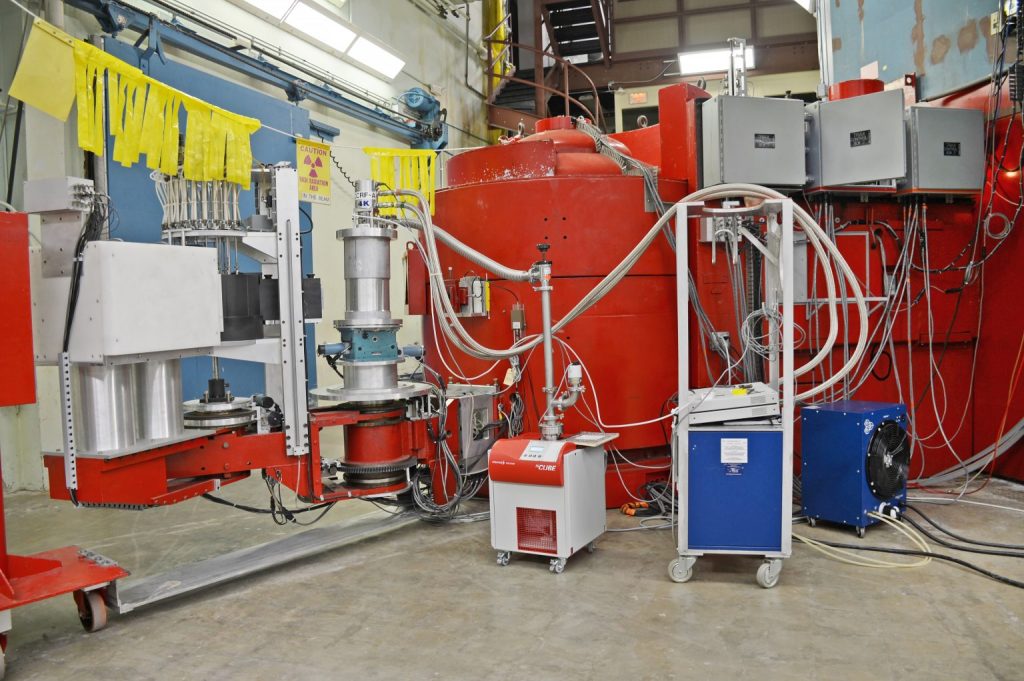TRIAX is a thermal triple-axis spectrometer and the only of its kind on a university campus in the United States. Triple-axis spectrometers are highly flexible instruments that were designed to study the dynamic response of solids in a typical energy range of ~1meV up to tens of meV. This enables the study of excitations such as phonons and magnons. TRIAX has also been extensively used for single crystal diffraction — especially of magnetic systems — and for quasielastic studies of magnetic fluctuations. As with any neutron instrument, inelastic studies benefit from larger crystals, but some information can be obtained from powders. Elastic experiments have been performed on TRIAX with crystals smaller than 10mg or even with epitaxial thin films.

- Beam spectrum: Thermal
- Monochromators: vertically focusing PG (002), Cu (220), and Si (111)
- Analyzer: flat PG (002)
- Filtering: PG, Be, Si
- Collimation: Source-Monochromator: 60´, 43´, 29´, 14´
Monochromator-Sample: 60´, 40´, 20´, 10´
Sample-Analyzer: 80´, 40´, 20´, 10´
Analyzer-Detector: 80´, 40´, 20´, 10´ - Scattering angle: up to 120°
- Software interface: SPICE (LabView based, developed at Oak Ridge National Laboratory)
- Sample environment: continuous temperature control between 5K and 700K